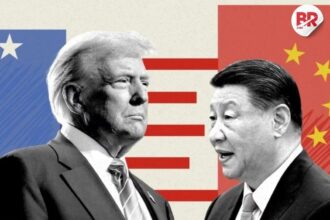
When presidents dream of firing the Fed Chair, your wallet should start sweating.
Firing Fed Chair: Could a President Really Do It?
Could the President fire the Fed Chair? It’s a question that’s gone from theoretical to terrifyingly plausible. And while the U.S. law says a Federal Reserve Chair can only be removed “for cause,” the real-world definition of that phrase remains unclear—and dangerously debatable.
But why should this matter to you, me, or someone running a small business in Ohio or Bengaluru? Because even whispering about firing the Fed Chair can shake global markets—and your wallet.

What Does This Mean for the Average Person?
When markets panic, your savings feel it. Interest rates may jump. Loans become more expensive. Your 401(k)? It could dip. Globally, India’s closely tied financial system could also feel the heat. It’s not just about politics. It’s about your pocket.
In short, the Fed’s independence keeps presidents from messing with your mortgage.
The Legal Gray Zone: What “Cause” Really Means
Under the Federal Reserve Act, the Chair (like any governor on the board) can only be removed “for cause.” Sounds clear. But what exactly counts as “cause”?
Historically, it means serious wrongdoing—corruption, criminal acts, or clear failure to perform duties. Not “the Fed raised interest rates and I didn’t like it.”
So, while a President might want to fire the Fed Chair for policy reasons, the courts probably wouldn’t agree.
Also Read: ‘Warning Signs Are Flashing’: Trump Tariffs Threaten Inflation, Says Powell
Why the Fed Needs Its Independence
The Federal Reserve isn’t supposed to be a political puppet. It’s designed to act based on economic data, not election dates. That means making tough calls—like raising interest rates to fight inflation—even if it hurts short-term growth.
Now imagine a Fed forced to obey campaign-season demands. That could lead to:
- Artificial booms followed by painful busts
- Uncontrolled inflation
- Loss of global trust in U.S. financial policy
In other words, chaos.
What Happens If a President Tries Firing the Fed Chair?
It wouldn’t be easy—or fast. Here’s how that political thriller might play out:
- The Announcement: The President claims the Chair must go, citing “cause.”
- Legal Reviews Begin: The Justice Department and White House lawyers step in.
- The Lawsuit Hits: The Fed Chair almost certainly sues, triggering a court battle.
- Congress Reacts: Hearings begin. Some lawmakers may try to block the move with legislation.
- The Markets Spiral: Investors panic, and the dollar could weaken.
Even just talking about it is enough to create uncertainty, which can hurt global markets—including emerging economies like India that depend on U.S. financial stability.
Also Read: Trump turns Covid info website into lab leak promotion page
It’s Not Just Politics—It’s Policy on Steroids
Disagreements between Presidents and Fed Chairs are nothing new. Trump criticized Jerome Powell. Reagan clashed with Paul Volcker. But firing the Chair? That’s a red line we’ve never crossed—and crossing it could change how the world sees America’s financial system.
Think of it this way: The Fed is the brakes. The President is the gas. Take away the brakes, and well… you get a crash.
Final Word: A Dangerous Gamble
Trying to remove a Fed Chair isn’t just a bold move—it’s a reckless one. It risks the U.S. economy, the President’s credibility, and the Fed’s future. For now, the Fed’s independence remains intact. But the fact we’re even talking about this is a warning sign.
Because once politics breaks the Fed, no one gets to sit in the front seat anymore.
Also Read: Regret at the Top: Trump Officials Recoil from Harvard Letter Controversy












